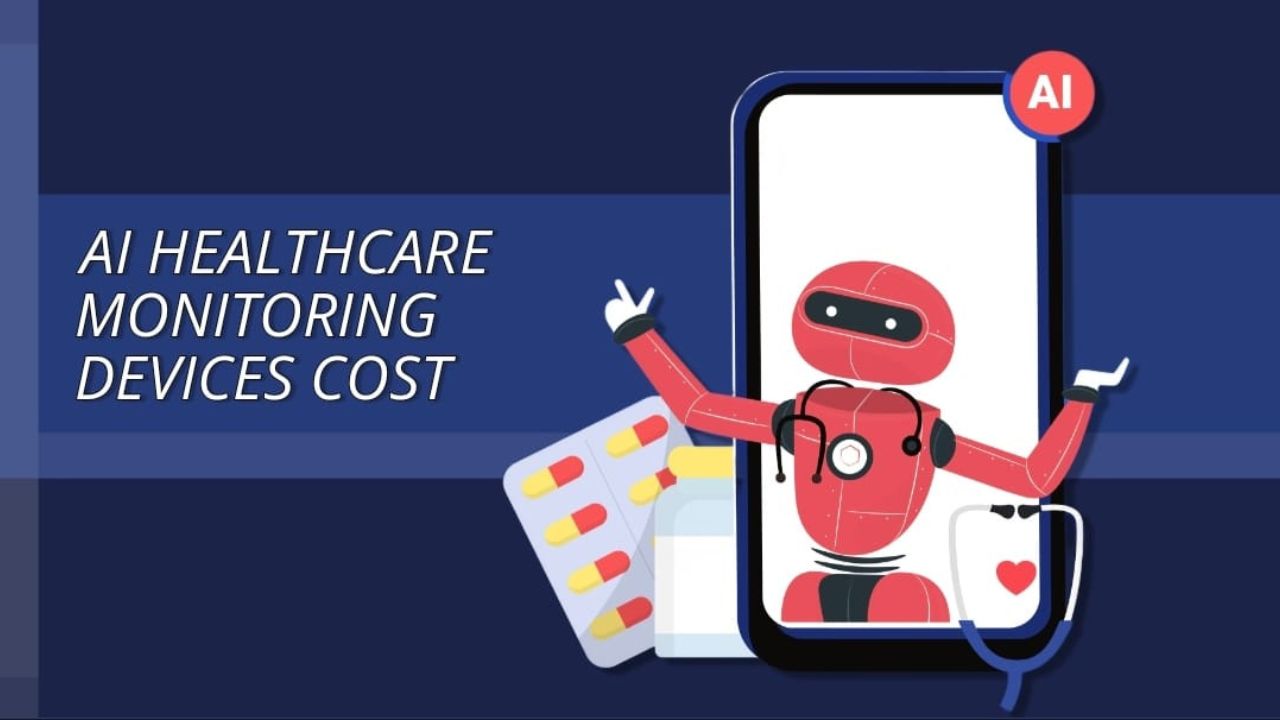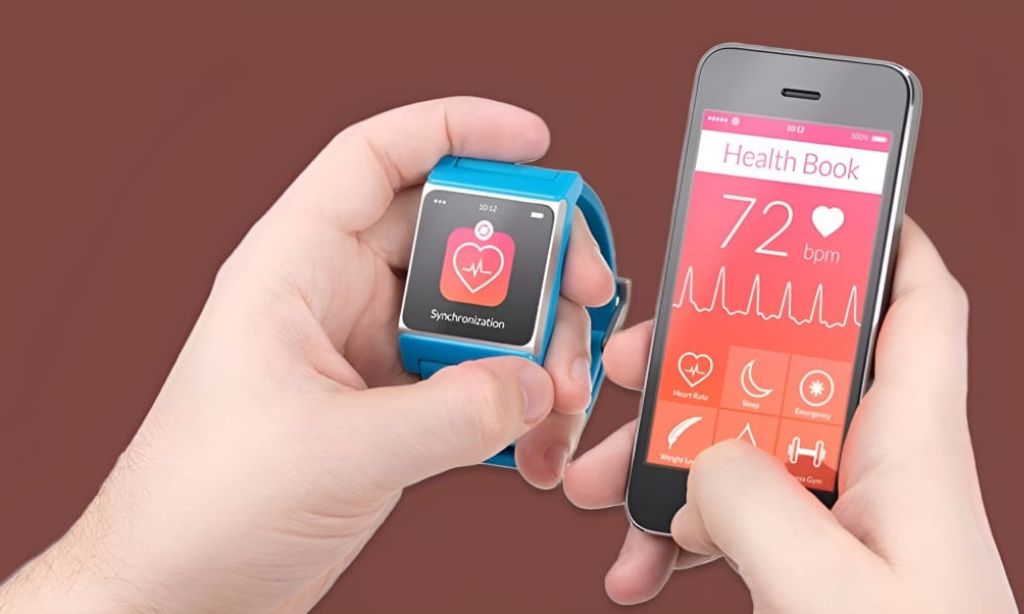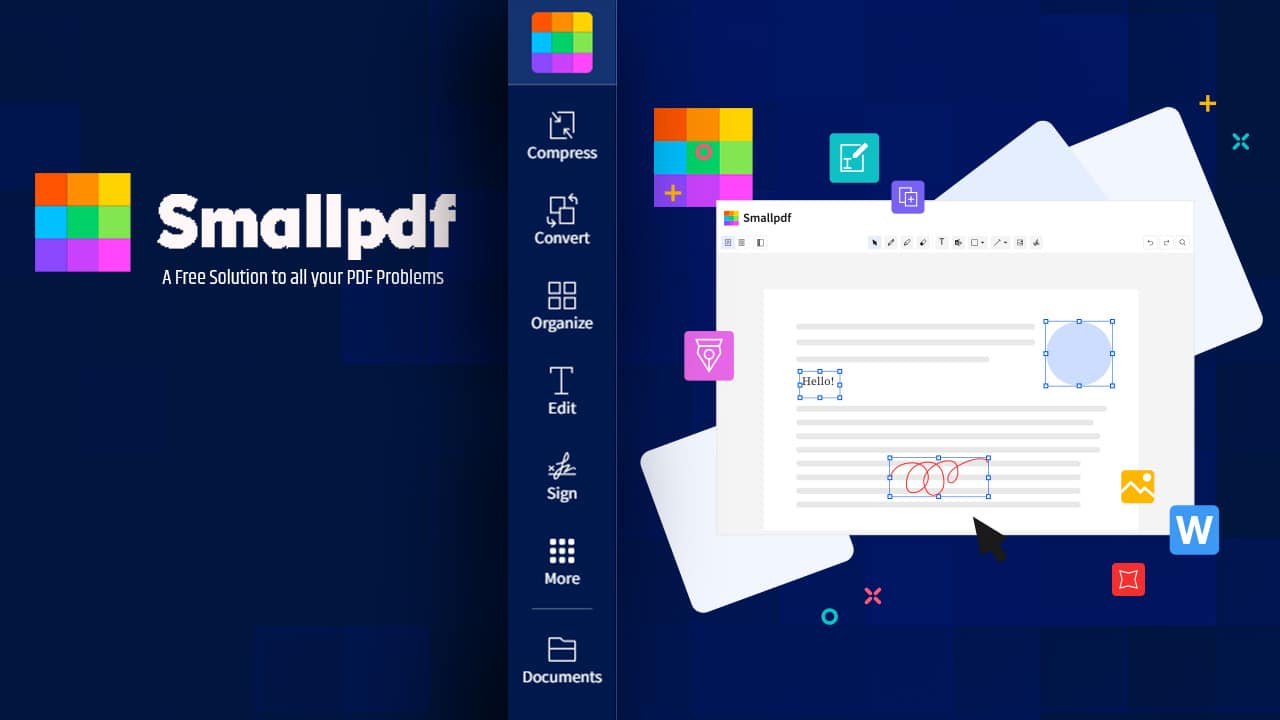Are you wondering how much do AI healthcare monitoring devices cost? You’re not alone. As artificial intelligence continues to revolutionize the medical industry, many are left questioning how this impacts their wallet.
Whether you’re a patient seeking better health management or a healthcare provider looking to enhance patient care, understanding the financial aspect is crucial.
One important fact to note: while a complete bespoke AI system can cost anywhere from $20,000 to $1,000,000, pricing widely varies based on needs and functionalities. This article promises to navigate you through the complexities of AI device costs without overwhelming your budget or your brain.
We’ll unravel what drives these expenses and explore ways these smart devices could actually save money in the long run.
Ready for some clarity? Let’s delve into our detailed guide that offers insights and answers around AI healthcare monitoring device costs—information poised to improve both health outcomes and financial wellbeing.
Keep reading; real enlightenment is just ahead!
Content Highlights
- The price of AI healthcare monitoring devices varies and can range from $20,000 for simple wearables to over $1,000,000 for advanced implantable technology.
- Insurance policies may cover the cost of some AI healthcare monitoring devices; always check with your provider.
- As technology improves, these smart health tools might get cheaper and offer more savings over time.
AI Healthcare Monitoring Devices Cost- At a Glance
Check out the following table to learn briefly about how much do AI healthcare monitoring devices cost.
|
Device Type |
Cost Range |
Influencing Factors |
|
Wearable devices (e.g. smartwatches) |
$100 – $500 |
Features, brand |
|
Implantable devices (e.g. cardiac monitors) |
$20,000 – $1,000,000 |
Advanced technology, customization |
|
Remote monitoring systems |
$200 – $800 |
Data accuracy and system integration capabilities |
Key Points:
- Costs vary widely depending on device type and capabilities.
- Advanced features like AI analytics and connectivity with health records impact pricing.
- Reputed brands are generally more expensive than new manufacturers.
- Insurance coverage is available but requires detailed medical need validation.
Artificial Intelligence (AI) Healthcare Monitoring Devices
Artificial intelligence (AI) healthcare monitoring devices are advanced technologies that use AI algorithms to monitor and analyze patient data in real time. These devices have the capability to detect patterns, provide predictive insights, and alert healthcare providers of potential health issues before they escalate.
Overall, AI healthcare monitoring devices aim to improve patient care, enhance diagnostic accuracy, and optimize treatment plans for better health outcomes.
Definition of AI healthcare monitoring devices
AI healthcare monitoring devices are smart tools that watch and track your health. They use computer brains to make sense of body signals like heartbeats or sleep patterns. These gadgets can find out if something is wrong quickly, which helps doctors care for you better.
For example, a band on your wrist might check how many steps you take, how well you sleep, and what your pulse is.
People with illnesses or those who want to stay fit use these monitors all the time. Doctors also use them to keep an eye on patients from afar. This technology learns from a lot of patient information and finds health problems early by looking at data from things we wear or have in our body that measure health signs.
Features and capabilities
AI healthcare monitoring devices are smart tools that can do lots of cool things to take care of your health. They use powerful computer brains to look at a lot of health information quickly and spot problems early.
This means doctors can help you faster and better. These devices keep an eye on how active you are, check your heart rate, and even watch your sleep so you stay healthy.
Some wearables fit on your wrist like a watch, while others go inside your body to give doctors updates about your health all the time. And if you’re not near a doctor, remote monitoring devices send important information straight to them, wherever they are.
With AI, these gadgets get smarter over time—they learn from what they see in the data and make even better guesses about what’s up with your health.
Just imagine having a little coach with you all the time, reminding you when it’s time for medicine or helping manage long-term conditions like diabetes without always going to the doctor’s office.
Benefits for patients and healthcare providers
AI healthcare monitoring devices are changing the game for both those who get care and those who give it. With these smart tools, spotting health issues early can be much easier, which means people can start treatments sooner and have better chances of getting well.
This is huge for patients because it leads to less time spent being sick or in hospitals. Doctors and nurses also win big with AI because they can manage patient care better without drowning in paperwork.
Hospitals that use AI devices are seeing some great results too. They find that patients feel happier with their care, and there’s often a drop in the number of times a person has to come back to the hospital after going home.
That’s not just good news for patients’ health; it saves money too! Plus, research shows that machines can match up to humans—or even outdo them—in key health tasks like reading X-rays or keeping track of heartbeats, making everyone’s job a bit easier.
Types of AI Healthcare Monitoring Devices
AI healthcare monitoring devices come in various forms, including wearable devices, implantable devices, and remote monitoring devices. Each type serves a specific purpose and offers unique benefits for patients and healthcare providers.
Wearable devices
Wearable devices are gadgets that you can wear or carry around. They include things like smartwatches and fitness trackers. These devices keep track of your daily activities, like how many steps you take or how well you sleep.
Some can even monitor your heart rate and remind you to move if you’ve been sitting for too long.
AI healthcare monitoring devices integrate with wearable technology to gather personal health data and provide real-time insights into the user’s health status. This combination enables personalized healthcare through continuous monitoring, early detection of potential issues, and proactive interventions based on individual health patterns.
Implantable devices
Moving from wearable devices to implantable devices, it’s essential to understand that implantable AI healthcare monitoring devices are designed to be inserted inside the body. These sophisticated technologies can monitor a patient’s vital signs, detect irregularities, and transmit data wirelessly to healthcare providers.
With the ability to continuously track patient health metrics, such as heart rate and blood pressure, these devices offer real-time insights into a patient’s well-being without requiring external interaction.
Implantable AI healthcare monitoring devices have the potential to revolutionize patient care by providing constant monitoring and early detection of health issues. These advancements in technology bring profound benefits for patients with chronic conditions or those in need of long-term medical surveillance.
Remote monitoring devices
Remote monitoring devices, such as wearable and implantable technologies powered by AI algorithms, are transforming healthcare. These sophisticated devices collect and analyze patient data in real-time, providing valuable insights for both patients and healthcare providers.
By enabling continuous remote monitoring, these devices play a pivotal role in early detection of health issues and can lead to more personalized treatment plans based on individual patient data.
Not only do they improve patient outcomes, but they also increase the efficiency of healthcare delivery by reducing unnecessary hospital visits and optimizing resource allocation.
Now let’s check out how much do AI healthcare monitoring devices cost!
How Much Do AI Healthcare Monitoring Devices Cost?-In Detail
In this section, we’ll discuss thoroughly how much do AI healthcare monitoring devices cost. Keep reading to learn every detail appropriately.
Average AI Healthcare Monitoring Devices Cost
The average cost of AI healthcare monitoring devices varies depending on the type and features; find out detailed pricing information in our blog post!
Cost range for different types of devices
Wearable AI healthcare monitoring devices may cost between $100 and $500, depending on the features and brand. Implantable AI devices can range from $20,000 up to $1,000,000 due to their advanced technology and customization.
Remote monitoring devices typically fall within the range of $200 to $800, based on factors such as data accuracy and integration capabilities.
Overall, the costs vary widely based on the type of device and its specific functionalities; certain options cater to different needs at various price points.
Examples of popular devices and their costs
The cost of AI healthcare monitoring devices varies depending on the type and features. For instance, wearable devices such as smartwatches with AI capabilities can range from $200 to $500, offering continuous health tracking.
Implantable devices like cardiac monitors may cost between $3,000 and $6,000, providing real-time data for patients with heart conditions. Remote monitoring systems utilizing AI algorithms could be priced between $1,000 and $10,000 based on customization and integration with existing healthcare infrastructure.
The effectiveness of data analysis using AI technology, the standing of manufacturers or brands in the production of dependable monitoring devices, and the addition of features like seamless connectivity with electronic health records all have an impact on these costs.
The higher end of these price ranges typically represents comprehensive solutions tailored for advanced healthcare facilities, while basic consumer-focused options fall within the lower range.
Cost Comparison Between AI and Traditional Healthcare Monitoring Devices
AI healthcare monitoring devices may have a higher initial cost compared to traditional devices, but the long-term benefits and advancements in technology make them a worthwhile investment.
Want to learn more about how AI devices compare to traditional ones? Keep reading for detailed insights.
Advantages and disadvantages of each type
Wearable AI healthcare monitoring devices offer continuous tracking of vital signs, providing real-time data for timely interventions. They promote patient engagement and independence by allowing individuals to actively monitor their health.
Still, their reliance on consistent connectivity and battery life may pose challenges for some users.
Implantable AI devices provide seamless integration with the body, offering long-term monitoring without external disruptions. They can significantly improve accuracy in tracking critical parameters but entail surgical procedures for implantation, raising concerns about invasiveness and infection risks that need careful management.
Remote monitoring AI devices enable healthcare providers to access patient data from a distance, enhancing care coordination and reducing the need for physical hospital visits. Yet, they rely heavily on internet connectivity, which could potentially lead to issues in areas with poor network coverage or unstable connections.
Factors to consider when choosing between AI and traditional devices
When deciding between AI and traditional devices for healthcare monitoring, it’s essential to consider the specific application. Each has its strengths and weaknesses, with AI excelling in personalized data analysis and traditional devices often proving reliable in certain predictive applications.
Ethical concerns also need to be addressed due to the increased use of AI in healthcare. While potential cost savings are significant with AI tools, there are broader implications for medical practices and industry ethics that must be considered.
The decision-making process should involve evaluating factors such as the ethical implications of AI implementation, the specific functionalities required for accurate monitoring, and potential long-term cost benefits versus impact on medical practices.
Long-term cost savings
Long-term cost savings from AI healthcare monitoring devices can be substantial. By reducing hospitalizations and emergency room visits, these devices help cut down on overall healthcare expenses.
The use of connected medical devices and the Internet of Medical Things (IoMT) leads to significant cost savings compared to traditional healthcare services. Improved medication adherence through AI-powered remote patient monitoring can also result in long-term cost savings by preventing disease-related complications.
Factors Affecting How Much do AI Healthcare Monitoring Devices Cost
Various factors can influence the cost of AI healthcare monitoring devices, including the quality and accuracy of data, type of AI technology used, brand and manufacturer, design and features, as well as integration with other healthcare systems.
To understand more about these factors and how they impact the cost of these devices, keep reading.
Quality and accuracy of data
To ensure that AI healthcare monitoring devices provide meaningful treatment recommendations, accurate and comprehensive data are crucial. These devices rely on guidelines and quality criteria to develop and evaluate artificial intelligence-based prediction models (AIPMs) to maintain accuracy and reliability.
It’s essential to consider the potential risks associated with using data in AI healthcare monitoring devices while ensuring their quality and accuracy.
Moving forward, let’s delve into understanding the types of AI healthcare monitoring devices available on the market today.
Type of AI technology used
The type of AI technology used in healthcare monitoring devices plays a crucial role in their effectiveness. Machine learning algorithms are widely utilized to analyze and interpret the data collected from patients.
These algorithms can identify patterns, anomalies, and trends in the data, enabling early detection of potential health issues and providing valuable insights for healthcare providers.
Natural language processing (NLP) is also employed to extract information from medical records and simplify the process of data interpretation, ultimately enhancing the efficiency of healthcare monitoring systems.
In conjunction with machine learning and NLP, computer vision technology is integrated into some AI healthcare monitoring devices to visually assess patient conditions through image recognition.
Brand and manufacturer
When it comes to the cost of AI healthcare monitoring devices, the brand and manufacturer play a significant role. Different brands and manufacturers offer varying levels of quality, technology, and features in their products, which directly impacts the cost.
Some well-established brands may come with a higher price tag due to their reputation and advanced technological capabilities. Conversely, newer or lesser-known manufacturers might offer more affordable options without compromising on performance.
The choice of brand and manufacturer can influence not only the initial cost but also long-term maintenance expenses. It is essential for patients and healthcare providers to carefully consider the reputation, reliability, and support services provided by different brands when evaluating the overall value proposition of AI healthcare monitoring devices.
Design and features
When it comes to AI healthcare monitoring devices, the design and features play a crucial role in their functionality and usability. These devices are designed to be user-friendly, with intuitive interfaces and comfortable wearability for patients.
The features include real-time data tracking, advanced analytics capabilities, and seamless integration with other healthcare systems for comprehensive patient care. The design also focuses on durability and reliability to ensure continuous monitoring without compromising accuracy.
The design aspects also consider the aesthetics of the devices to provide a more appealing look, which can contribute to patient comfort and acceptance. Again, features such as waterproofing and long battery life enhance the practicality of wearable or implantable AI healthcare monitoring devices.
Integration with other healthcare systems
AI healthcare monitoring devices can be integrated with other healthcare systems to create a more comprehensive approach to patient care. By seamlessly merging with existing electronic health records and clinical workflows, AI devices enable healthcare providers to access real-time data, make better-informed decisions, and deliver proactive interventions.
This integration enhances the overall efficiency of healthcare delivery and contributes to improved patient outcomes while reducing the burden on healthcare resources.
The seamless incorporation of AI into various dimensions of healthcare systems marks a leap forward in providing personalized and effective care for patients. With this increased connectivity, AI-powered devices not only streamline processes but also facilitate better collaboration among different stakeholders within the larger healthcare ecosystem.
Insurance to Cover AI Healthcare Monitoring Devices Cost
Many insurance companies now provide coverage for AI healthcare monitoring devices. Understanding the steps to follow for insurance coverage can help patients access these advanced devices without financial burden.
Insurance companies that cover AI devices
Some insurance companies cover AI healthcare monitoring devices. They see the value of these advanced devices in improving patient care and reducing long-term healthcare costs.
AI in insurance is set to revolutionize the industry by 2030, streamlining operations and making a significant impact. Computer Vision in Insurance uses AI vision for risk management, automated risk assessment, claims management, and process monitoring.
The benefits of AI in insurance have been demonstrated through case studies and use cases.
Steps to follow for insurance coverage
To ensure insurance coverage for AI healthcare monitoring devices, begin by consulting your insurance provider to understand the specific policies and requirements. Gather detailed information about the device, including its features, benefits, and how it will impact your healthcare management.
Work with your healthcare provider to provide any necessary documentation or medical evidence that supports the need for the AI device. Keep meticulous records of all conversations and correspondence with the insurance company to ensure a smooth process.
Understanding the steps required for obtaining insurance coverage is crucial to navigating through this complex process. By engaging with your insurance provider early on and being proactive in providing necessary information, you can increase the likelihood of receiving coverage for AI healthcare monitoring devices.
Future of AI Healthcare Monitoring Devices and their Impact on Cost
Advancements in AI technology are expected to drive down the cost of healthcare monitoring devices, making them more accessible and affordable for patients. This could potentially lead to long-term cost savings for healthcare systems and improve overall patient care.
Advancements in technology and potential cost changes
Advancements in technology have the potential to significantly reduce costs in healthcare. With AI and robotics leading the way, a reduction of 5% to 10%, equivalent to $200 to $360 billion, could be achieved.
The application of AI in healthcare is projected to cut annual US healthcare costs by an estimated USD 150 billion by 2026.
As technology continues to advance in the healthcare sector, particularly with the integration of artificial intelligence and robotics, significant cost reductions are anticipated.
These advancements hold promise for reshaping the landscape of healthcare expenditure and accessibility.
Potential cost reduction for healthcare systems
AI in healthcare has the potential to lower healthcare costs significantly, with estimates suggesting a reduction of 5% to 10%, which could amount to savings between $200 and $360 billion.
In addition, AI applications in healthcare have the capability to potentially reduce annual US healthcare costs by an impressive USD 150 billion by 2026. The industry is actively exploring AI’s potential to drive down care costs and streamline administrative procedures, indicating promising future possibilities for cost-saving measures within healthcare systems.
Moving forward, let’s delve into how these advancements impact the affordability and accessibility of patients and examine their potential long-term effect on improving overall health outcomes through technological innovation.
Increased accessibility and affordability for patients
The potential cost reduction for healthcare systems through AI implementation may pave the way for increased accessibility and affordability for patients. With enhanced efficiency and improved patient care, digital health strategies aim to make healthcare more accessible, supporting equitable and universal access to quality health services.
This advancement could contribute to reduced healthcare costs while providing substantial improvements in all areas of patient care.
Takeaway
How much do AI healthcare monitoring devices cost will vary based on factors like customization and functionality. The rise of artificial intelligence in healthcare applications will affect the projected medical cost trend for 2024.
The average price of a complete, bespoke AI system can range from $20,000 to $1,000,000. The FDA’s prioritization of guidance on AI and cybersecurity in healthcare highlights the growing significance of this technology.
As AI continues to expand across different industries, its impact on healthcare costs and patient care remains a pivotal area for ongoing exploration.
Frequently Asked Questions (FAQs)
If you have further queries about how much do AI healthcare monitoring devices cost, review these questions and answers.
1. Why do prices for these devices change so much?
Prices change based on what the device does, how new it is, and if it has special features like being able to connect with doctors or remind you to take medicine.
2. Can using one of these devices save me money in other ways?
Yes! These smart devices can catch health problems early or track your habits, which can keep you from needing expensive treatments later.
3. Are there cheaper options for keeping an eye on my health using AI?
Some apps or smaller gadgets might give basic health tips or monitor simple things for less money than bigger, more complex machines.
4. Will insurance help pay for AI health monitors?
Sometimes insurance will help cover the cost, especially if a doctor says you need one; always check with your insurance plan first.
5. How big is the AI medical device market?
The global AI in healthcare market is projected to experience immense growth over the next several years. Valued at $16.3 billion in 2022, the market is forecast to expand at an annual growth rate of 40.2% through 2029 to reach a market size of $173.55 billion. This growth is indicative of the increasing adoption and development of AI technologies aimed at improving healthcare solutions and patient outcomes. Rewritten in my own words while preserving the key information from the original text regarding the market size, growth rate, and growth projections.





































